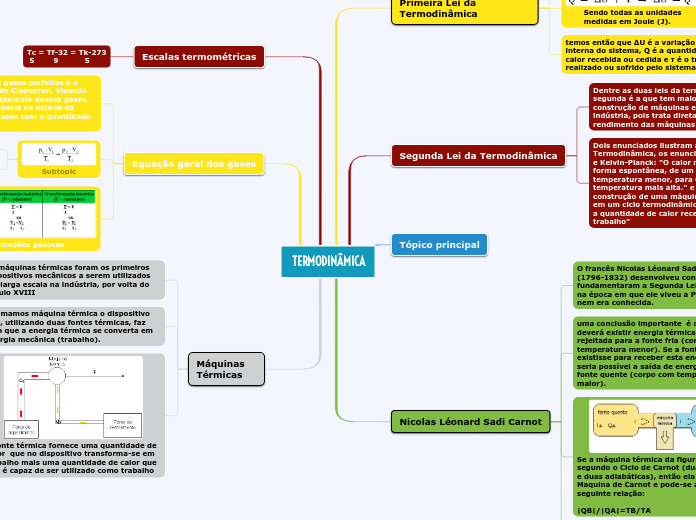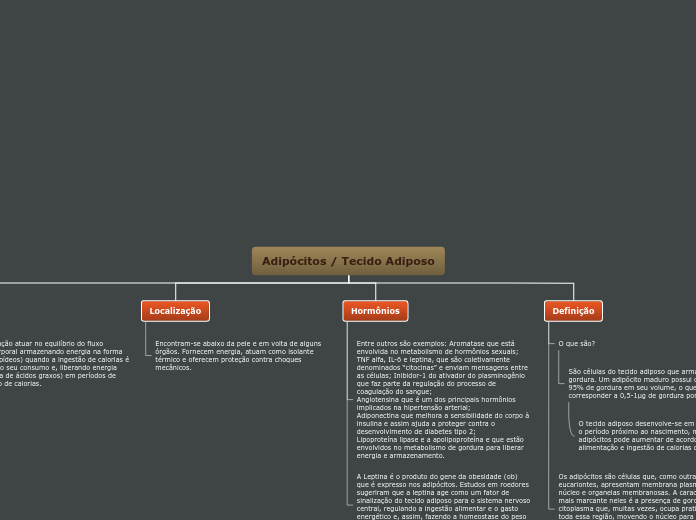TERMODINÂMICA
The first division between continents was made by ancient Greek navigators, who named them 'landmass, terra firma'.
Generally classified by convention rather than any strict criteria, nowadays seven regions are regarded as continents from a geopolitical point of view.
Máquinas Térmicas
Antarctica is not only the coldest place on Earth but also the highest, driest, windiest and emptiest, completely covered with ice.
75% of the world's ice and 70% of the Earth's fresh water is located here.
Summer months of December to February give 24 hours of light, while the winter months of late March to late September are pitch dark the whole day.
There are no permanent inhabitants, except for scientists maintaining research stations in Antarctica.
A fonte térmica fornece uma quantidade de calor que no dispositivo transforma-se em trabalho mais uma quantidade de calor que não é capaz de ser utilizado como trabalho
Antarctica sees half a year of light and half a year of complete darkness.
Write down which months give 24 hours of light, and which are the ones that give pitch darkness the whole day.
All day dark
All day light
Chamamos máquina térmica o dispositivo que, utilizando duas fontes térmicas, faz com que a energia térmica se converta em energia mecânica (trabalho).
The coldest natural temperature ever recorded on Earth was recorded here.
Write it down.
Answer
As máquinas térmicas foram os primeiros dispositivos mecânicos a serem utilizados em larga escala na indústria, por volta do século XVIII
Write down the temperatures of the Frozen Continent during the summer and the winter.
Winter
Summer
Equação geral dos gases
You can find on this continent:
- the world's largest river as per water volume, the Amazon.
- the highest volcanoes of the world -- Mt. Cotopaxi and Mt. Chimborazo.
- the country, Brazil, which is the largest coffee producer in the world.
- the second-highest mountain range in the world, the Andes.
Transformações gasosas
Subtopic
The world's largest snake and the second-longest lives here.
Name this snake as well as other animals that can be found in South America.
A equação geral dos gases perfeitos é a conhecida Equação de Clapeyron. Visando descrever o comportamento desses gases, ela relaciona as variáveis de estado da equação geral dos gases com a quantidade de mol de um gás.
There are 12 countries that make up South America.
Name as many of you can! Don't forget about their capitals.
Escalas termométricas
North America has five time zones and it is the only continent with every type of climate.
North America was named after the explorer Amerigo Vespucci and is also known as the 'New World'.
The world's largest sugar exporter among the seven continents - Cuba - also called the 'sugar bowl of the world' is located here.
Tc = Tf-32 = Tk-273
5 9 5
Nicolas Léonard Sadi Carnot
Australia is the world's smallest continent and is also known as an 'island continent' as it is surrounded by water on all sides.
It includes 14 countries and it is the least populated continent.
Its name comes from the Latin word 'australis' meaning 'southern' because it lies entirely on the south of the equator.
Já o rendimento da Máquina de Carnot é dado por:
Australia is home to some animals that can't be found anywhere else in the world.
Name at least 6 of these unique animals.
Se a máquina térmica da figura funcionar segundo o Ciclo de Carnot (duas isotermas e duas adiabáticas), então ela é uma Maquina de Carnot e pode-se afirmar a seguinte relação:
|QB|/|QA|=TB/TA
The largest sandstone monolith can be found here and it is one of Australia's most recognizable natural icons. It is the largest monolith in the world.
Name this rock and write down one of the characteristics it is famous for.
Famous for
uma conclusão importante é de que sempre deverá existir energia térmica sendo rejeitada para a fonte fria (corpo com temperatura menor). Se a fonte fria não existisse para receber esta energia, não seria possível a saída de energia térmica da fonte quente (corpo com temperatura maior).
The largest coral reef can be found here.
Name this coral reef, add its length and mention what type of coral is it.
Type
Length
Name
O francês Nicolas Léonard Sadi Carnot (1796-1832) desenvolveu conceitos que fundamentaram a Segunda Lei, sendo que na época em que ele viveu a Primeira Lei nem era conhecida.
Out of 14, how many countries you can name?
How about these countries' capitals?
Fiji - Suva
Tópico principal
Segunda Lei da Termodinâmica
Of the seven continents of the world, Africa is the second largest.
Africa comprises 54 countries and it is the hottest continent.
The equator passes through the middle of Africa and it receives direct sunlight throughout the year.
The world gets 66% of its chocolate, 50% of the gold and 95% of the diamonds from Africa.
Dois enunciados ilustram a 2ª Lei da Termodinâmica, os enunciados de Clausius e Kelvin-Planck: "O calor não pode fluir, de forma espontânea, de um corpo de temperatura menor, para um outro corpo de temperatura mais alta." e "É impossível a construção de uma máquina que, operando em um ciclo termodinâmico, converta toda a quantidade de calor recebido em trabalho"
What are the major animals found in Africa?
Also, there are a few species that can be found only in Africa.
Name at least 6 of these animals.
Dentre as duas leis da termodinâmica, a segunda é a que tem maior aplicação na construção de máquinas e utilização na indústria, pois trata diretamente do rendimento das máquinas térmicas.
Out of 54, how many countries you can name?
How about these countries' capitals?
Country
Morocco - Rabat
Primeira Lei da Termodinâmica
Europe is separated from Asia by the Ural mountains and the Caspian Sea.
It is surrounded by water on three sides: Mediterranean Sea in the south, Atlantic Ocean in the west, and the Arctic Ocean in the north.
Three-fourth of the world's potatoes grow in Europe.
temos então que ∆U é a variação da energia interna do sistema, Q é a quantidade de calor recebida ou cedida e τ é o trabalho realizado ou sofrido pelo sistema.
Europe is a large region, with several major rivers that connect its many countries. There are five primary rivers in Europe, and one of them flows through 10 countries, more than any other river in the world.
Name these rivers.
River's name
Sendo todas as unidades medidas em Joule (J).
The most beautiful cities in the world can be found in Europe. History, architecture, arts, and famous cuisine is representative almost to each country.
Out of 51 countries how many you can name?
And how many capitals?
Se um sistema gasoso recebe calor do meio externo, essa energia pode ser armazenada para que exista a possibilidade de realização de trabalho.
Europe is one of the smallest continents, yet it is home to some of the largest mountain ranges.
About 20% of the total landmass of the continent is considered mountainous.
Name the 5 longest mountain ranges in Europe.









